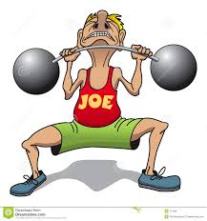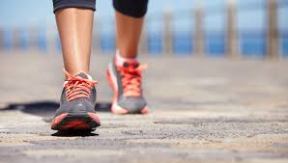This post is for those young men out there who want to be buff… whether you’re an athlete in training or a gym rat who wants sick abs and big arms. Lifting weights and working out your muscles is necessary to make them grow, but the foods listed below are perfect “ingredients” for human muscle. Put these in your belly, then lift weights, and watch your biceps grow.
- Eggs. Eggs are the perfect protein. The protein in eggs has the highest biological value of any food, including beef. Biological value is a measure of how well a food supports your body’s protein needs. Make sure you eat the yolk too. In addition to protein, the yolk contains vitamin B12, which is necessary for fat breakdown and muscle contraction. Even though the yolk is high in cholesterol, research has shown that the cholesterol in egg yolks does not turn into serum cholesterol, and therefore does not increase your risk of heart disease.
- Almonds. Almonds are like medicine for your muscle. They are the best sources of the most absorbable form of vitamin E, alpha-tocopherol vitamin E. Vitamin E is important because it is a potent antioxidant that can help prevent free-radical damage after heavy workouts. The more vitamin E in your body, the faster your muscles will recover from a workout and start growing. A handful or 2 of almonds a day should be enough.
- Salmon. This fish is swimming with high-quality protein and omega-3 fatty acids. To build muscle, you need to store new protein faster than your body breaks down the old stuff. Omega-3’s can help decrease muscle-protein breakdown after your workout and improve recovery. It can also help reduce your risk of heart disease and diabetes.
- Yogurt. Yogurt is the perfect work out food because it is an ideal combination of protein and carbohydrates for exercise recovery and muscle growth. Buy the variety with fruit on the bottom or add your own fresh fruit. The extra carbohydrates from the fruit will increase your blood insulin levels, which will reduce post-exercise protein breakdown.
- Beef. Beef is a major source of iron and zinc, which are 2 nutrients crucial in muscle building. It’s also the #1 source of creatine with 2 grams in every 16 ounces. Creatine is your body’s energy supply for pumping iron and anaerobic exercise.
- Olive Oil. The monounsaturated fat in olive oil can act as an anti-catabolic nutrient, or a nutrient that prevents muscle breakdown. It works by lowering levels of a cellular protein called TNF-a, which is a protein linked with muscle wasting and weakness. Use the extra-virgin variety because it has a higher level of vitamin E.
- Water. Muscle, no matter where it is on the body, is 80% water. Even a small change in hydration status or body water can impair exercise performance and adversely affect recovery. Research has shown that protein synthesis occurs at a higher rate in muscle cells that are well hydrated compared to dehydrated cells. So basically, the more parched you are, the slower your body uses protein to build muscle. A good way to make sure you rehydrate after a work out is to weight yourself before and after each exercise session, then drink 24 ounces of water for every pound lost.
- Coffee. Drinking coffee a few hours before anaerobic exercise will help you perform longer. Caffeine can directly stimulate the muscles and help you push out 5 more reps or sprint for 10 more seconds.
Reference: Campbell A. 8 Foods that Pack on Muscle. Men’s Health, 2013. <http://www.menshealth.com/nutrition/muscle-building-foods>.



